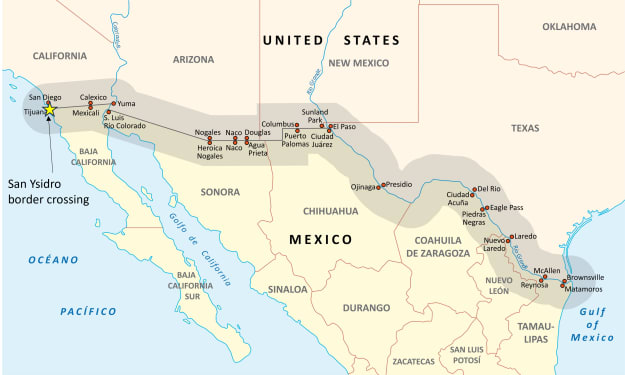To resist junk food, we'll need much more willpower.
Daily routines can be automated to allow your mind to focus on more essential responsibilities.

When it comes to food, do we really have free will?
We may feel completely in control when we're at our most focused and in control, but because food choices and eating are everyday habits that are mostly made without thought, much of what we eat isn't because we applied judgment or even listened to our hunger cues — much of our consumption is mindless.
That isn't always a terrible thing. Daily routines can be automated to allow your mind to focus on more essential responsibilities.
It can become a problem when the inclination to follow cues and triggers is controlled in favor of eating unhealthy meals.
However, manipulating the tendency to follow cues and triggers in order to consume unhealthy foods might become an issue.
Placement of end caps and eye level
Food businesses are well-known for employing effective marketing strategies to boost sales. These nudges could have boosted sales of any item, but because highly processed foods are profit centers for huge food producers — the supermarket's most powerful players — these are the foods that benefit from strategic placement.
Nudges may have boosted sales of any item, but because highly processed goods are profit centers for huge food companies, they're the ones that get special treatment.
Supermarkets and food shops are meant to move you around and take you to locations you might not otherwise visit. The staples aren't all in one place, forcing buyers to cover a lot of ground even if they're only looking for bread and bananas. To keep us from getting into a purchasing rut, the necessities are occasionally shifted about. Because most customers enter a supermarket looking to the right, special offers and promotions will be on the immediate right as you enter.
Then there's the shelf: Because most customers are right-handed, placing items on the right side of the shelf increases sales. Products at eye level sell better, and that's where you'll find what generates the most revenue for the store. The offerings for children will be at a lower level, at their eye level. While you're waiting for the cashier to drive impulse shopping, you'll notice displays at checkouts and end-caps.
Nothing has happened by chance.
Artificial intelligence and machine learning, it appears, can now take these techniques to the next level.
The way worldwide food corporations utilize artificial intelligence (AI) to urge consumers to buy more of their products is the subject of a new study published in Public Health Nutrition. Nudges are a tactic for influencing people's behavior; they can be used to improve health (for example, by routinely displaying chopped carrots and apples on the kitchen counter), or they can be used to promote the intake of less healthy foods.
Danone, McDonalds, Pepsico, Coca-Cola, Nestle, Yum Brands, and others were among the 12 corporations studied. They looked for evidence of AI being used to influence customer behavior in the companies' reports.
AI is widely used in the food industry.
According to the survey, AI is widely used by food firms. It's utilized for social listening, which involves analyzing social media comments for trends and determining what people want. Products are exactly stocked for each location according to order algorithms and data-driven demographics. Weather-related preferences are also assessed digitally.
The product's placement on menu boards is equally as crucial as its location in the supermarket. Many organizations, according to the study, employ AI to modify the visibility and importance of offerings on their menu boards. For example, McDonald's claims to use decision technology to change drive-through menu boards based on weather, time of day, and patterns. Yum Brands employs facial recognition to adjust product placement on the menu based on predicted age, sex, and mood.
Companies utilize AI and other developing technology to enhance sales when clients are on their website or app, because so much of meal ordering is done on screens. They use bots and voice assistants to supplement sales and use recommendation algorithms to make add-on suggestions.
Ads and products are targeted based on data acquired by cookies, which includes location and other information.
Is big data delivering on its promise?
Is it a cause for concern that AI is in the hands of food companies?
According to the authors, firms enhance consumption by changing the availability, location, functionality, and appearance of their offers, and since what these companies sell is primarily bad food, a rise in consumption has a negative impact on the population's diet. McDonald's gains come at the expense of public health.
Companies enhance consumption through changing the availability, location, functionality, and presentation of their offerings.
The ability to test several versions of adverts with different wording, pictures, and placement, as well as the use of big data to develop personalized possibilities, takes nudging to the next level, making rejecting the draw of appetizing food even more difficult. "Data can be used to target unhealthy food and beverage marketing to select communities, potentially exacerbating existing inequities in diets and health," the scientists write. Data from harmful food marketing might be used to extrapolate long-term health concerns, which could then be exploited in insurance, financial services, differential pricing, and other discriminatory uses."
Big food frequently claims that it is simply offering consumers what they want.
Big food frequently claims that it is simply offering consumers what they want. Food manufacturers may now appeal to our need for sugar, fat, salt, convenience, availability, and low prices thanks to data-driven products. Most people are lured to eat junk food while sitting on a couch in front of a television.
Big data's promise to humanity was not to use ever more sophisticated methods to get people to do what's easy and enticing.
Big data's promise to humanity was not to use ever more sophisticated methods to get people to do what's easy and enticing.





Comments
There are no comments for this story
Be the first to respond and start the conversation.